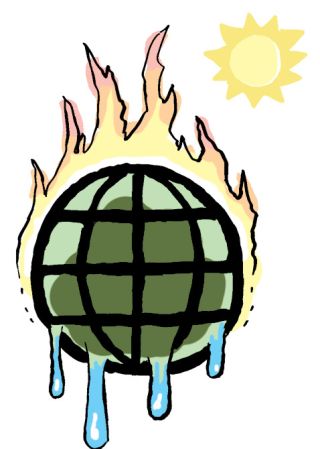New Report highlights need for Loss & Damage in Climate Response

A new report from ActionAid 'The Long Shadow of Climate Crisis - Why a new funding facility must address loss and damage' highlights the need for Governments to go beyond humanitarian assistance and towards reparations in its response to climate injustice.
Food Price Inflation and Food Insecurity
While people across the globe are feeling the impact of the current cost of living crisis, the report compares food inflation in Europe with that experienced in drought-affected areas of the Horn of Africa, where rises are "far far steeper" (p.4):
- While average food prices in Europe increased by 3.15% in the two months following the start of the war in Ukraine, local communities in East Africa experienced far more extreme price rises.
- In Somaliland for example, some communities faced price increases of 163% for wheat, 86% for pasta and 260% for cooking oil.
- More than 1 in 9 people are at risk of starvation across East Africa.
- More than 40% of the population of Somalia are facing acute food insecurity from this October.
- Nearly 55% of Somali children are acutely or severely malnourished.
- The number of people facing starvation in the region is more than twice the population of Sweden, or more than four times the population of Ireland.
The report further refers to "unprecedented hunger" in East Africa caused by climate change which casts a "long shadow in low-income climate-vulnerable countries, for years, decades or even generations" (p.6).
Gendered Impact
As national governments attempt to deal with rampant inflation, spending on other essential areas (such as public services, education, infrastructure) are cut. These cuts have a disproportionate impact on women and girls relying on these services for employment and education. The wider-ranging impact of societal unrest, conflict and climate-related migration also disproportionately impacts women and girls in terms of the violence, starvation and displacement experienced.
At a household level, high food price inflation means less income for other essentials. This, coupled with reduced employment and public service provision, means a poverty will deepen.
The report contains a comprehensive set of damning statistics on the impact of climate disaster on women and girls, from increased mortality rates to furthering economic inequality, to arranged marriage of young girls as their families struggle to feed them, to increased domestic violence (p.18). The evidence is stark.
Climate Justice - The Case for Loss and Damage
Countries in the Global South, who have contributed least to climate change, are suffering the most. Overseas Development Assistance (ODA) "promotes and specifically targets the economic development and welfare of developing countries" and takes the form of net debt relief grants, in-donor refugee costs, humanitarian aid, bilateral development projects, and multilateral ODA (OECD, 2022), it does not specifically address loss and damage caused by climate catastrophe. Climate Finance targets, agreed in COP15 in Paris, are intended to support mitigation and adaptation caused by climate change (UNCC, 2021). But what happens when mitigation and adaptation has come too late?
As reported on page 21:
The climate crisis, its costs and consequences are projected to escalate to an unimaginable extent. Studies suggest that if the planet continues to heat up at its current rate of warming, 167 million homes could be lost to climate disasters between now and 2040. This would be the equivalent of losing nearly 23,000 homes per day, every day, to climate impacts, for 20 years.
Climate change has already had a devastating impact on East Africa. National Governments need funds to rebuild their communities and economies. They need to rebuild physical infrastructure and implement supports to address rising inequality, and educational and economic disadvantage. The report makes just 8 recommendations which, if implemented (and implemented quickly) could support Governments to do this:
- Urgent action in the Horn of Africa: Rich nations must urgently scale up, release and operationalise flexible, principled multi-year funding to meet the UN humanitarian appeal for Ethiopia, Kenya and Somalia, and to help save lives now. This funding must reach local organisations already responding to hunger crises in their communities, including organisations led by women and youth.
- At COP27 the issue of loss and damage financing must be on the formal negotiation agenda at COP27.
- At COP27 all Parties (governments) must finally agree to the principle of setting up a new financing facility to address loss and damage.
- Wealthy industrialised countries must scale up climate finance contributions in the form of grants, and in particular allocate funds to addressing climate-induced loss and damage.
- Automatic debt relief should be granted to developing countries immediately following climate disasters, so that resources can be immediately used to meet the needs of vulnerable countries, and countries should be prioritised for debt renegotiation and even cancellation.
- The UNFCCC’s Warsaw International Mechanism (WIM) and the Technical Expert Group on Comprehensive Risk Management (TEG-CRM) should strengthen the recognition of the importance of social protection for addressing loss and damage, and create more opportunities for learning about the potential and practicalities for implementing climate-proofed systems of universal and gender-responsive social protection.
- The WIM and G7 countries should shift focus from promoting private climate insurance to governments and citizens of counties in the Global South, to supporting adaptation and risk-reduction strategies that include no-regrets, rights-based, scalable, national social protection systems. These must be equitably and predictably financed by countries in the Global North.
- Policies, practice and finance to address loss and damage - whether under the WIM, the LDFF, or in national programmes – must be gender transformative. They must increase and enable women’s access to loss and damage finance, create space for women’s leadership in addressing loss and damage, address women’s disproportionate care burden, promote and accelerate gender-transformative social protection policies and quality public services, and incorporate women’s protection into all action on loss and damage.